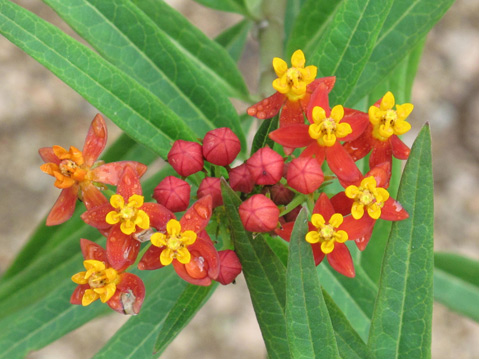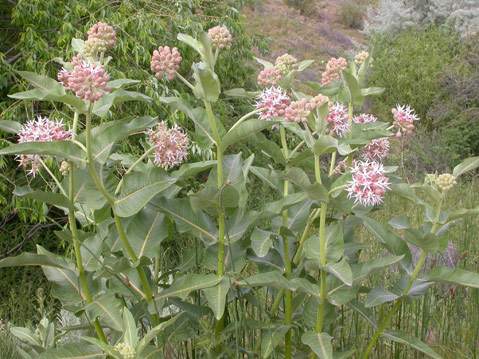Tropical Milkweed Threatens Monarchs
Don’t Plant Wrong Species; Get the Right One at Botanic Garden Native Plant Sale

As concern over the dwindling number of monarch butterflies that visit Santa Barbara grows, so does the debate between planting native versus tropical milkweed. But Frederique Lavoipierre says that there is no debate, explaining, “The science says plant your native.”
A biologist who serves as director of education at the Santa Barbara Botanic Garden, Lavoipierre is an expert in plant and insect relations. “Tropical milkweed becomes a problem because it blooms year-round, and there’s a protozoan parasite that builds up in huge populations that affects the caterpillars,” she said. Infected monarchs suffer from smaller body sizes, shorter life spans, and reduced flight performance, and a recent study found that monarchs on the Southern California coast remain highly infected — 100 percent in some regions! — due to the year-round flowering milkweed.

California’s native milkweed, meanwhile, goes dormant in the winter and does not flower. “The butterflies will notice that there’s no more milkweed, and then they will hit the eucalyptus trees and will just hang out for the winter,” said Lavoipierre. “They are not breeding if there’s no milkweed for them to breed on — that’s what breaks the protozoan parasite cycle.”
Adult monarchs nectar on milkweed but also survive on a lot of other flowers. It’s the monarch caterpillars that will starve without milkweed, so planting the native variety does support monarchs and other beneficial pollinators, such as native bees and honeybees.
Many well-intentioned gardeners opt for the tropical milkweed because of the misconception that Santa Barbara’s monarchs migrate to Mexico to feed on such species. But only Eastern monarchs, who live east of the Rocky Mountains, winter in Mexico. Western monarchs overwinter along the Central and Southern California coasts.
Lavoipierre advises gardeners with tropical milkweed to significantly cut back all flowers in late November or early December to not adversely affect the butterflies. But if monarch health is the primary goal, she suggests replacing the milkweed with a native species.
4·1·1
Native milkweed and dozens of other regional species are on sale at the Santa Barbara Botanic Garden Fall Native Plant Sale October 3-November 1. See sbbg.org for details, including a schedule of lectures and events focused on native species throughout the month.



